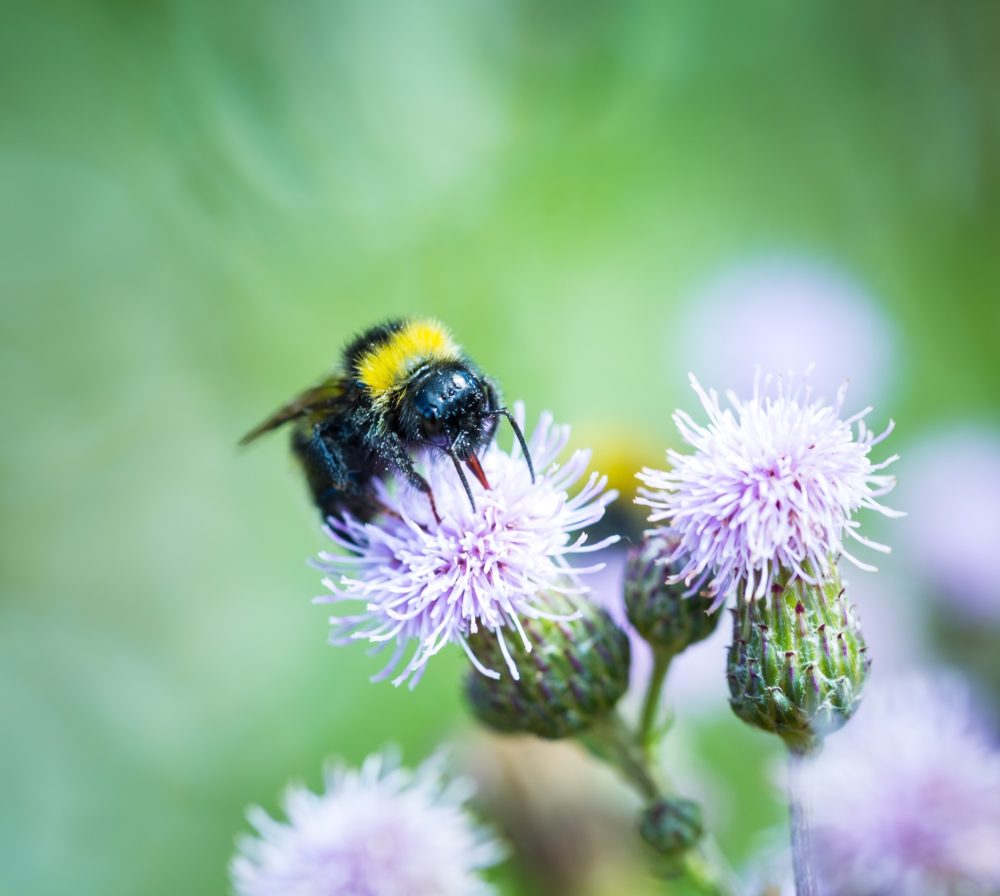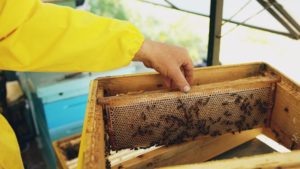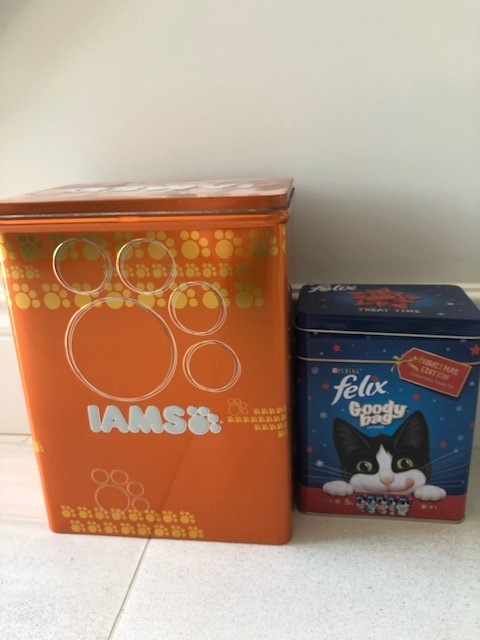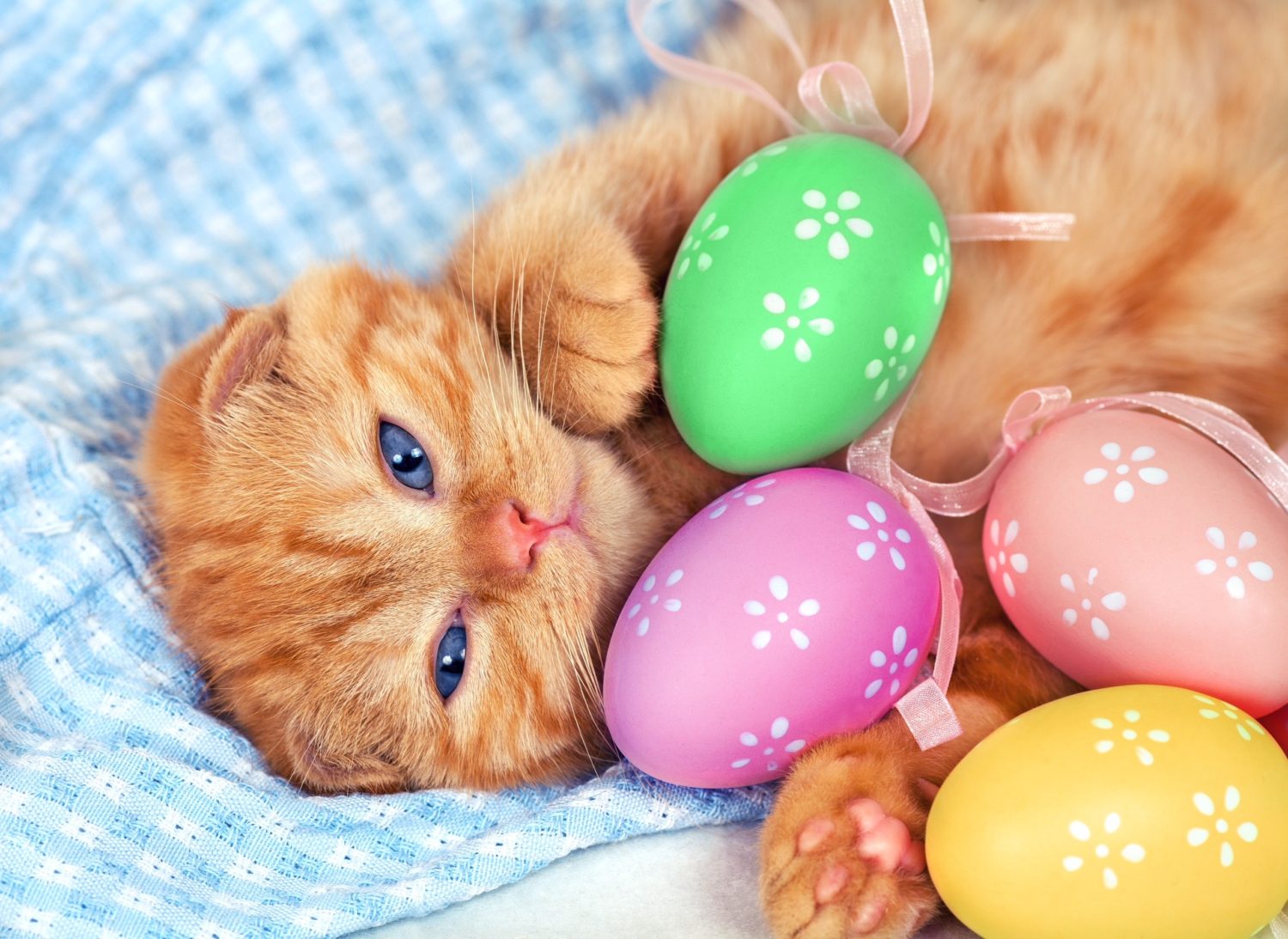
My cat is chasing bees. Should I be worried?
One of our cats, Misty, is an outside cat, full of adventure and forever bringing home her day’s conquests – usually in the form of mice. We live in the countryside where wildlife is abundant, but it surprised, and worried me, when I caught her chasing a bumble bee. Surely there are other animals to chase. Should I be worried? Can I stop her? What if she gets stung?
Cats are natural predators and will hunt anything that’s small and moves. A hovering bee, wasp or insect stopping and starting, flitting from flower to flower, will inevitably catch your cat’s attention. If you are lucky enough to witness this, your cat can be distracted, the bee gently waved on to another location and all ends well. But we simply cannot watch our feline friends every minute of every day. But we all know that bees can sting, and this is where the worry begins.

Is a bee sting dangerous to cats?
When a bee stings a cat, the bee’s stinger detaches from the bee and into the cat’s body. The small amount of toxin in this sting is what causes the pain. Very often, a cat can get stung on its paw whilst trying to catch the insect or on their faces by becoming too close to the bee. In such cases, most of the time this is not serious.
But a bee or wasp sting can, in some instances, become an emergency situation.
- If a cat is stung inside its mouth, nose or neck then emergency veterinary attention is required. The sting can cause swelling which could block the airways.
- Also, it is possible, just like in people, your cat may have an allergic reaction to the bee sting. Unfortunately, there is no way of knowing this until it happens. If this is the case, then contact your veterinary immediately.
- Multiple stings can also be life threatening to your cat, and again, immediate veterinary care is required.
How to tell if your cat has been stung by a bee?
In most cases, symptoms of a sting will be a mild swelling and tenderness where the cat was stung. This is usually on the face or the paws. These symptoms alone usually mean it is just a localized reaction to the sting.
If your cat has an allergic reaction to the sting then the symptoms will be much more severe. An allergic reaction will require immediate veterinary care. Signs of an allergic reaction include:
- Shallow or rapid breathing
- Difficulty in breathing
- Excessive swelling
- Vomiting
- Shock
- Weakness
- Pale gums
- Disorientation or stumbling
Thankfully it is not common, but it does happen and awareness of the severity of the symptoms is important. Immediate veterinary care could save your cat’s life.
What to do if a bee stings your cat
If you have any concerns or your cat is displaying any of the above emergency conditions, contact your vet immediately. If it’s a simple sting on a paw or nose for example, then it is possible to help your pet at home.
Bee stings
A bee can leave the barbed sting in the cat’s skin which will need to be removed. The sting can be gently scraped out using a blunt object such as your fingernail or a credit card. Tweezers are not advised as it can force more venom out of the stinger. Bee stings are acidic and a weak mix of water and baking soda to bathe the affected area can help ease the pain. Follow this with an ice pack wrapped in a towel. Monitor your cat closely for the next 24 hours for any signs of an allergic reaction.
Wasp stings
Wasps, unlike bees, do not leave the stinger in the skin. The venom of a wasp is alkaline therefore the affected area should be bathed in lemon juice or vinegar to ease the pain. A cold press can help to ease the pain. Again, monitor your cat for 24 hours for any other symptoms.
Do not attempt to give any antihistamine medication to your cat without advice from your veterinary. Some medications contain substances that are harmful to a cat’s health.
Can I stop my cat chasing bees?
Cats are very determined animals and from experience, once in hunter mode it can be very difficult to distract them. One cat owner suggested discreetly spraying your cat with a water pistol whenever they were seen with bees. This was with the intention of teaching them the association that bees resulted in an unpleasant action. It is important that they do not see you, they need to associate the bees with the unpleasant water spraying – not you!
If you see your cat with a bee or wasp, get her away from it. This is unlikely to stop them in the future, but it minimises the chance of being stung at that moment in time.
If you find a wasp nests or bees nest seek professional advice in removing or moving them. Do not attempt to do this yourself.
If your cat happens to get stung, hopefully with no severe reaction, they may simply learn the hard way that this is one prey that they should certainly leave well alone.
Do cats eat bees?
Yes, albeit surprisingly, some cats will eat a bee if they’ve successfully caught one. If you know that your cat has swallowed a bee, keep a close eye and monitor for any signs of allergic reaction. Contact your veterinary if you have any concerns.
Is it safe to keep bees if you have cats?
Beekeeping is a growing hobby but is it something you can undertake if you own cats? One beehive can contain between 10,000 and 80,000 bees, can these many bees and one, or a few cats live in harmony? Unless provoked, bees are quite happy to be left alone being busy with their own everyday lives. If you know that your cat has a particular fondness for chasing bees there will be a considerably increased risk of a few stings. If you know that your cat has a severe allergic reaction to bee stings, then it would be unwise to set up a bee hive where there are hundreds, even thousands of bees.

In conclusion;
Cats are natural hunters and it’s their instinct to hunt for prey in order to survive. And whilst domesticated cats know that their next meal will be served up in the same place, at the same time, the primal urge for tracking their next meal still needs to be satisfied. This is now play time for the cat rather than survival! Cats are immediately attracted to things that move and a small, bright yellow bee or wasp darting here and there will be just too tempting for some cats. Bees are small enough for a cat to be able to view it as potential prey and their contrasting yellow and black colouring will certainly catch their attention as it moves in unpredictable directions. But by being aware, monitoring carefully any stings and seeking urgent veterinary attention if the situation becomes dangerous to your cat, we can keep our cats safe.
Here are some of our other articles which you may find interesting:
Bach Rescue Remedy for Cats – and other useful Flower remedies for cats
What is a catio / cat enclosure?
Can you give arnica to cats and other homeopathic remedies for cats


